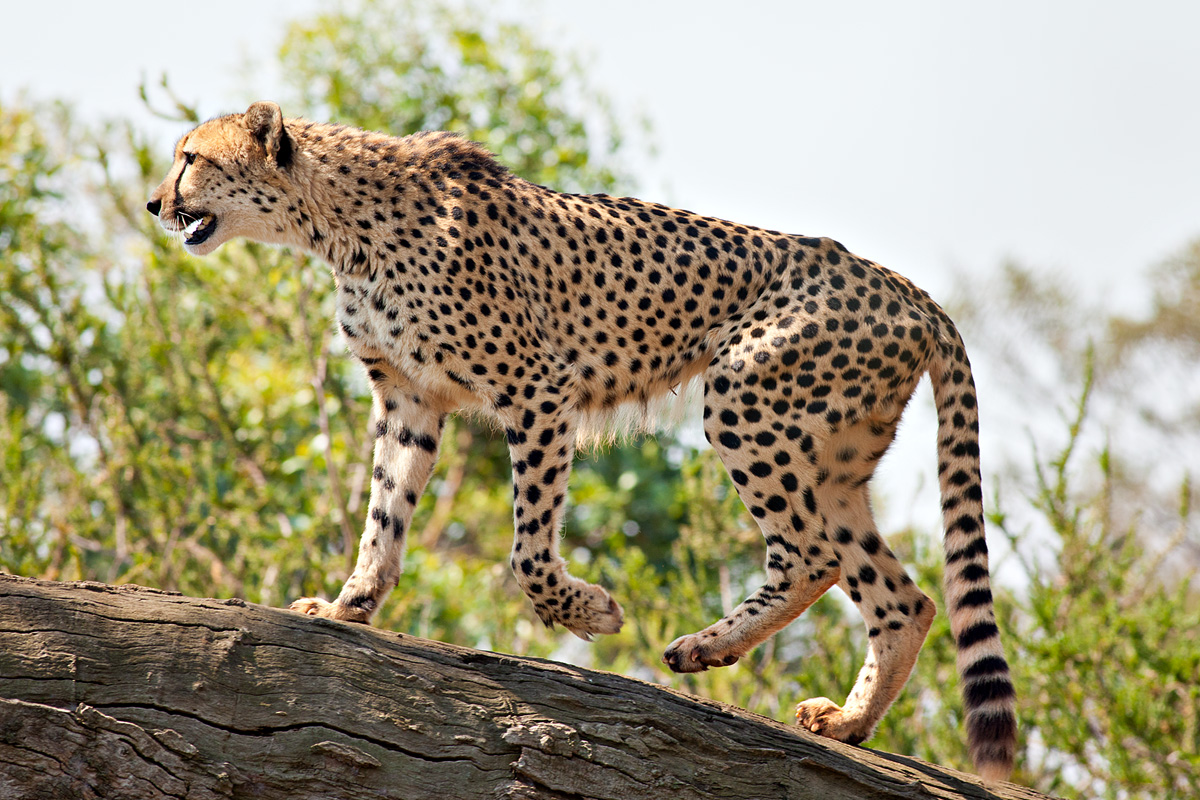Two homologous species:
Let's try a clouded leopard and a cheetah. Both of these species have claws but the claws provide different uses. A cheetah is known for being a fast runner and reside in Africa and Southwestern Asia. The clouded leopard is more arboreal. Their main habitat is in tropical and sub-tropical evergreens near Bangladesh and Thailand.
The cheetah and the clouded leopard both use their claws for hunting prey. Their claws also provide a different use. A cheetah uses its claws to help it run. The claws help them accelerate and make sharp turns at high speeds. The clouded leopards claws help the cat live and hunt among trees. This cat is not afraid to get down from trees. Their claws dig into tree bark and are specially designed to help the animal climb up and down with agility. Both species are from the family felidae.
 I am sure that the common ancestor to both of these species had the same trait. Both the claws of the leopard and the cheetah are used for hunting. So I would assume that this is one of the traits inherited by the common ancestor.
I am sure that the common ancestor to both of these species had the same trait. Both the claws of the leopard and the cheetah are used for hunting. So I would assume that this is one of the traits inherited by the common ancestor.
How about a kangaroo and a grasshopper. The grasshopper dwells in grass leaves and some eat from many plants. They also need to be able to escape predators. Their legs provide that function allowing them to jump really high.
A kangaroo one of the most famous marsupials is endemic to Australia and New Guinea. kangaroos have very few predators but they still need to be able to escape. Their huge legs allows them to hop as fast as 40 MPH for a large distance as well. Their legs are very efficient mainly because the hopping action allows them to inhale large amounts of air.
They both have pretty strong rear legs the envy of the animal kingdom. A grass hopper uses their legs mainly to jump but they also need to be able to take a few steps instead of leaps. Their legs consist of a femur and a tibia.
A kangaroo uses it's big legs to reach great speeds without using a lot of energy. A kangaroo's tendons act like a rubber band and help the animal propel forward. The kangaroo also has huge feet to stabilize its huge powerful legs.
I don't think that the common ancestor of the two species shared this trait. The legs for both species serve the same function but their ancestral lines diverged a very long time ago.



Great homologous traits. You did great job of explaining the trait expression as a result of the environmental stresses that shaped them. Good discussion of ancestry.
ReplyDeleteI like the analogous traits! You are probably right that the common ancestor didn't have this trait, but it doesn't matter too much since we know the evolution of the kangaroo well enough to know that this trait arose independently.
Good post.